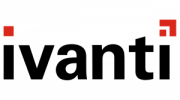How to Conduct Successful Confidential Searches
Confidentiality can make or break your hiring process if you’re planning to replace top-level talent. Studies show that when executive-level employees are forewarned, sometimes they “try to influence the selection process in a way that could cement their personal legacy rather than going by what’s best for the company.” Instead, it’s better to conduct your searches confidentially. This protects your people and your brand.
But it can be difficult to keep recruitment a secret. For instance, you will be speaking to many people who are possibly connected to the departing employee. The best business networks are highly interconnected, after all.
Here are a few ways that you can conduct successful confidential searches.
Smaller selection committees
Many experts recommend four people. Remember, most people don’t leak information on purpose or to cause a problem. They leak it casually to friends and family in the course of a regular conversation. Reducing the size of the search committee can help combat leaks.
A small group not only helps limit the number of people who could leak the information, but it ensures a healthy balance of different perspectives on candidates.
Be careful not to simply accept volunteers for the selection committee. You need people who are intimately familiar with the organization, who will bring questions about the barriers and opportunities that the company may face in the coming years. Don’t bring in only the old guard, however. It is important to include future leaders in the assessment process. A successful selection committee brings a diversity of perspectives with regard to career experiences, age, race, and gender identities. Consider including an EDI expert to facilitate discussions about equity, diversity, and inclusion.
Each member should have the time and interest in committing to regular and thorough conversations about each candidate. Finally, make sure that the committee is prepared to keep an open mind about where the perfect candidate might come from.
Don’t name the company
Instead, discuss particular leadership skills that the organization has articulated a desire to obtain. During this stage, it’s okay to share more general requirements. A recent McKinsey Global Survey found that “even successful transitions didn’t require new executives to have all the answers, and certainly not within their first 100 days in the job.” In fact, about a third of the survey’s respondents said they needed more than 100 days to truly settle into their new positions. Communicate this idea to your candidates and reassure them that essential information will be passed along in due time.
However, you do need to respect the candidate’s time by disclosing the industry and seniority level. Occasionally a company wishes to remain anonymous because it doesn’t have a stellar reputation in the marketplace. The opposite can also be true, so highly popular companies may request that headhunters keep the company name anonymous to help find the right candidates. At the very least, let the candidate know what kind of company, what job title, and what industry they are courting.
Secure data transfers (and no emails)
Use password-protected documents and coded reports. Emails are very easy to forward or leave displayed accidentally. Rather than emailing committee members with discussions of candidates who are named, use something like a cloud-based data storage. Rename candidates with fake names if necessary.
When a company begins a hiring process, it is not only looking for a new employee but it is also disclosing a strategic direction. For this reason, secure data and confidential searches are essential. Safe data practices protect not only you and the candidates but also the company itself.
Sometimes the company is looking for a new competency, which indicates to the marketplace that the company is pivoting in a new strategic direction. If a data leak occurs and the candidate names redacted, you might think you’re still safe. But even general information like core competencies can give clues to competitors about future strategic directions. In the short-term, this could lead to candidate poaching. In the long-term, a data leak could endanger the company’s future viability.
Some of these measures might feel extreme, but a seamless transition is priceless in comparison. Applying these tips can make the headhunting process easier on you, your client, and the people you interview. By utilizing a small committee size, secure data practices, and non-specific company information, companies can ensure a successful confidential search.












